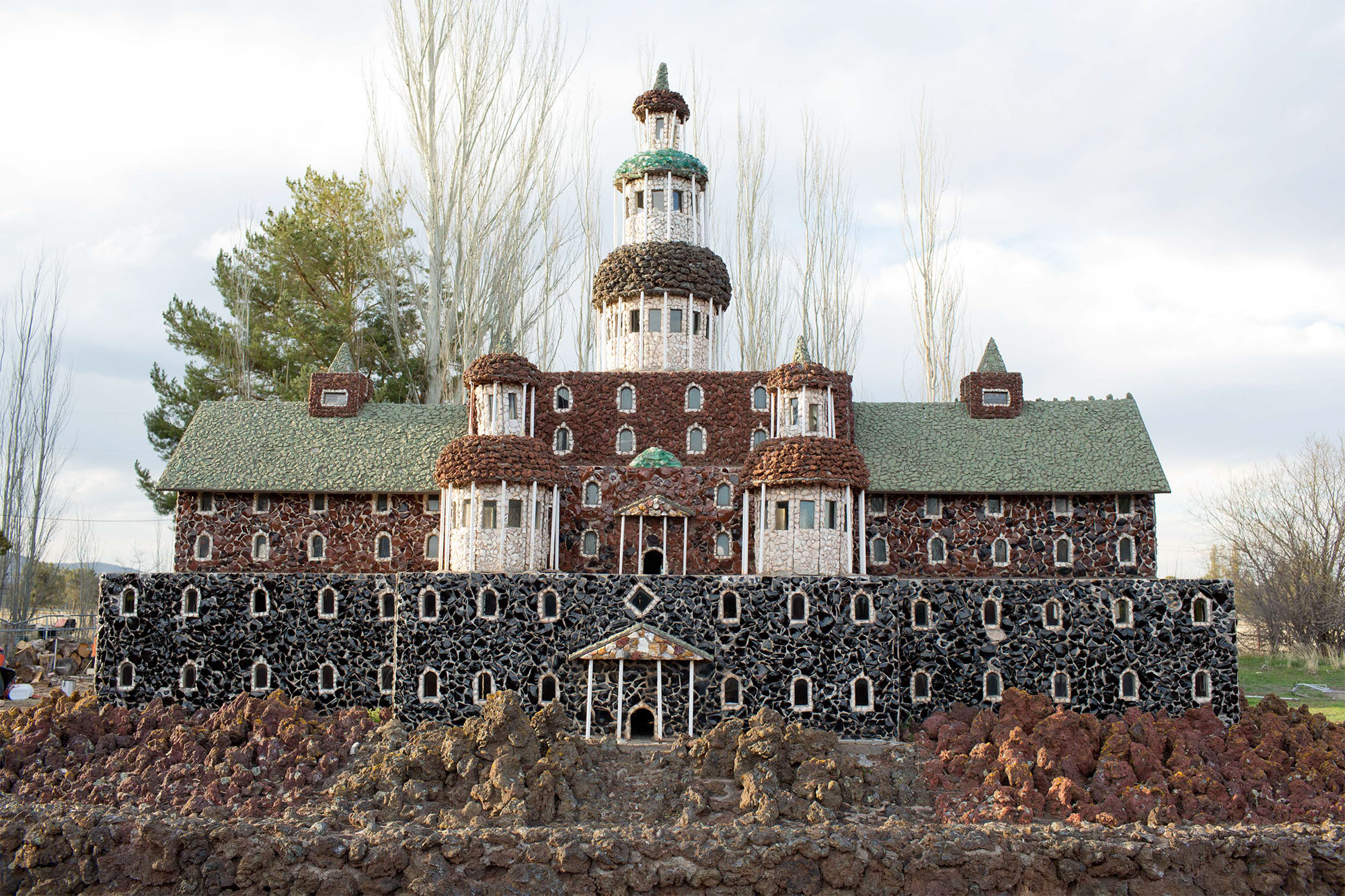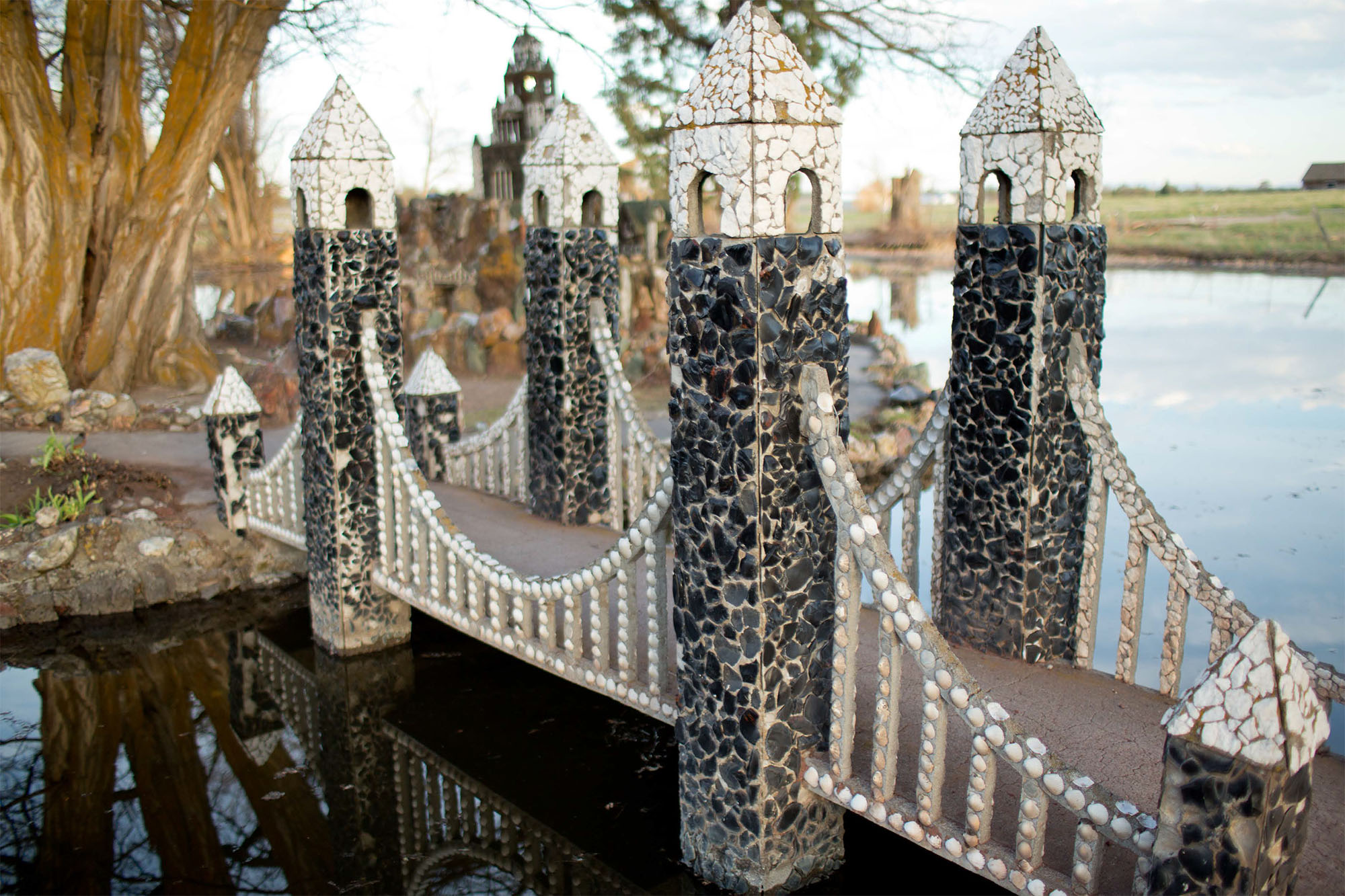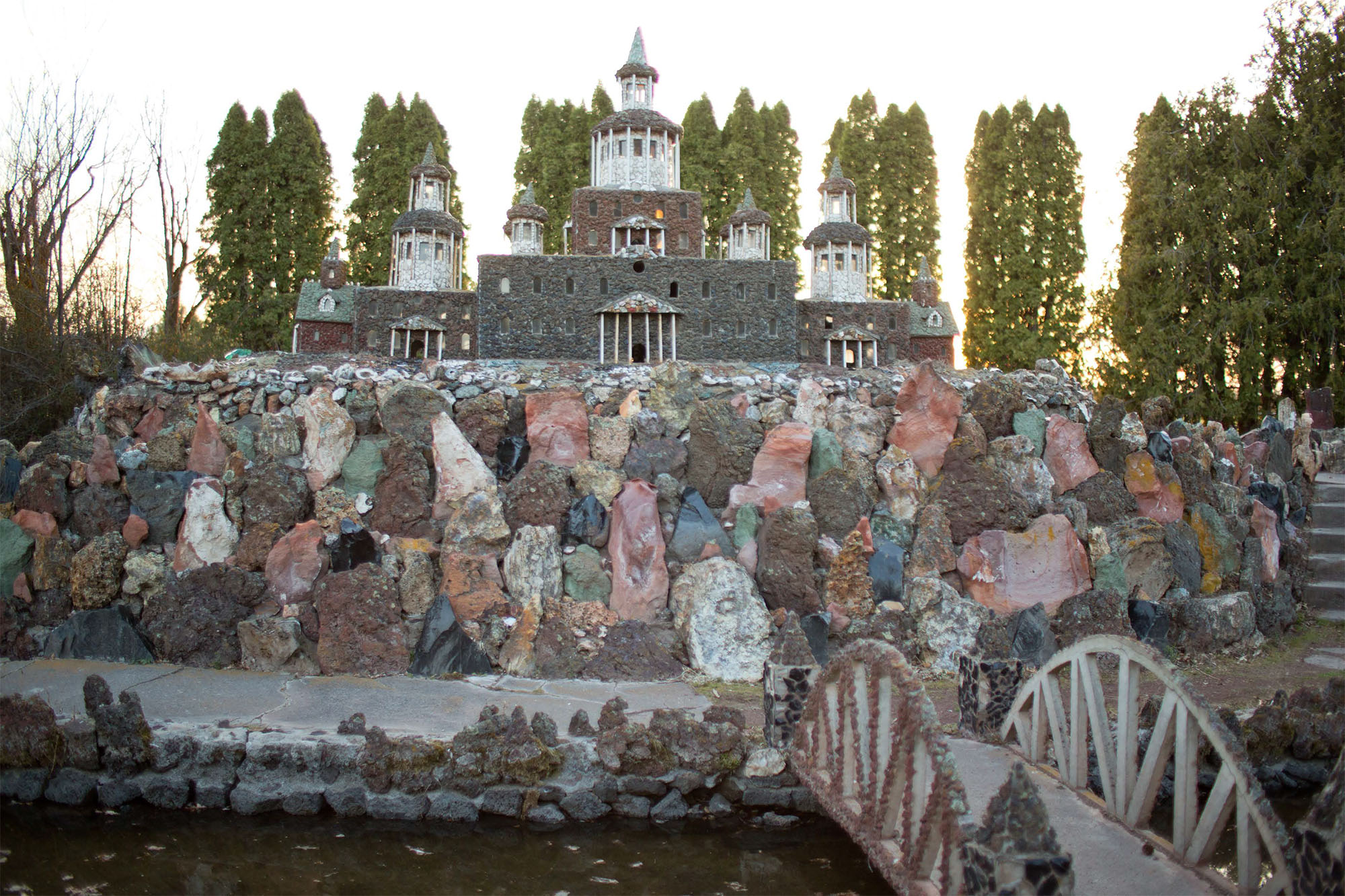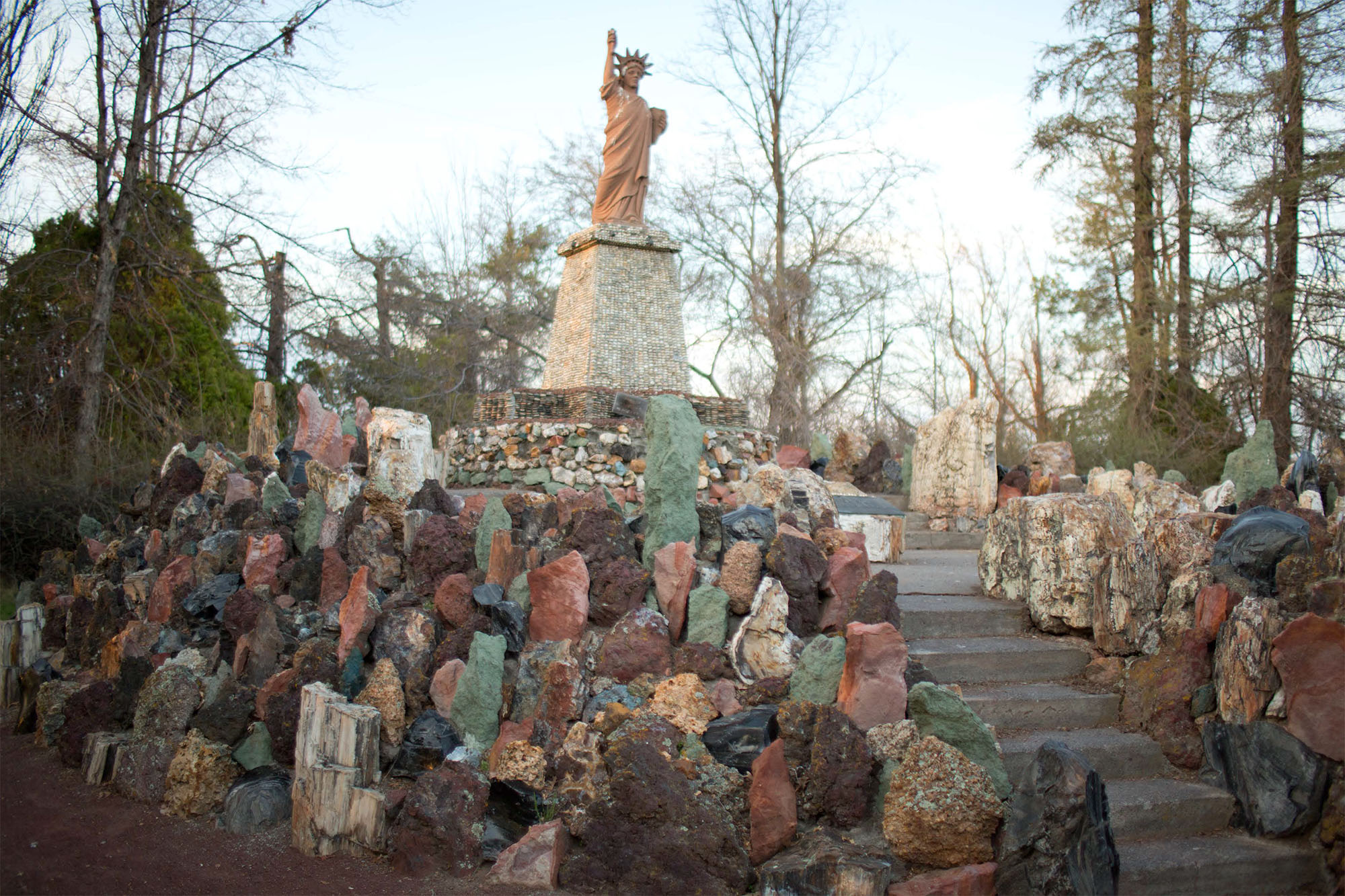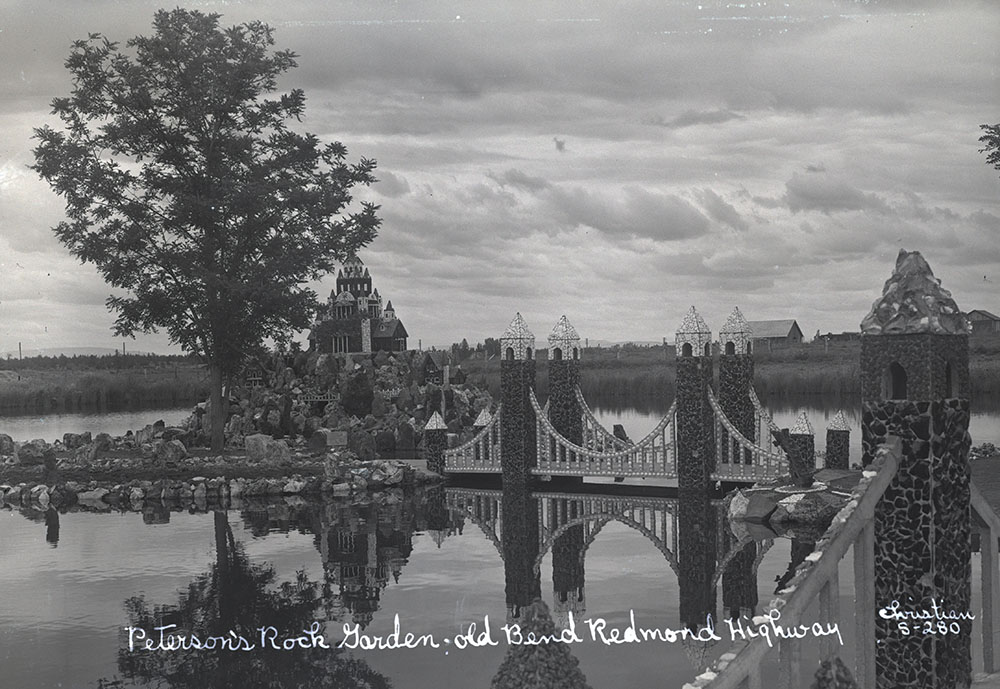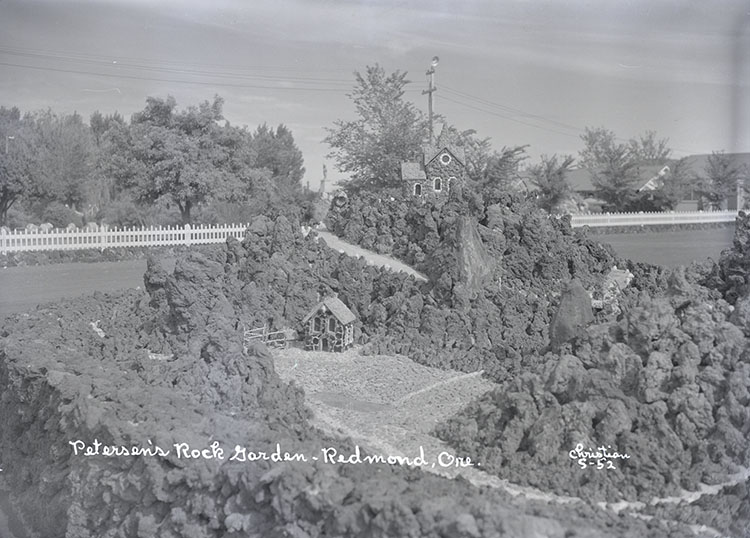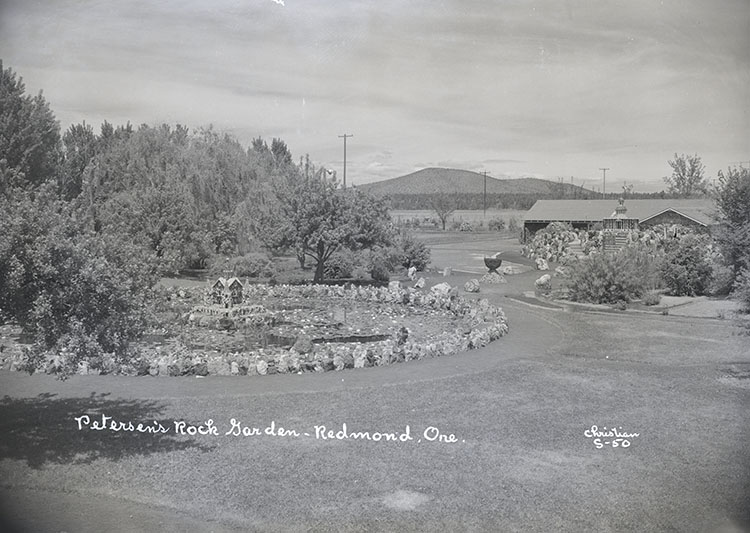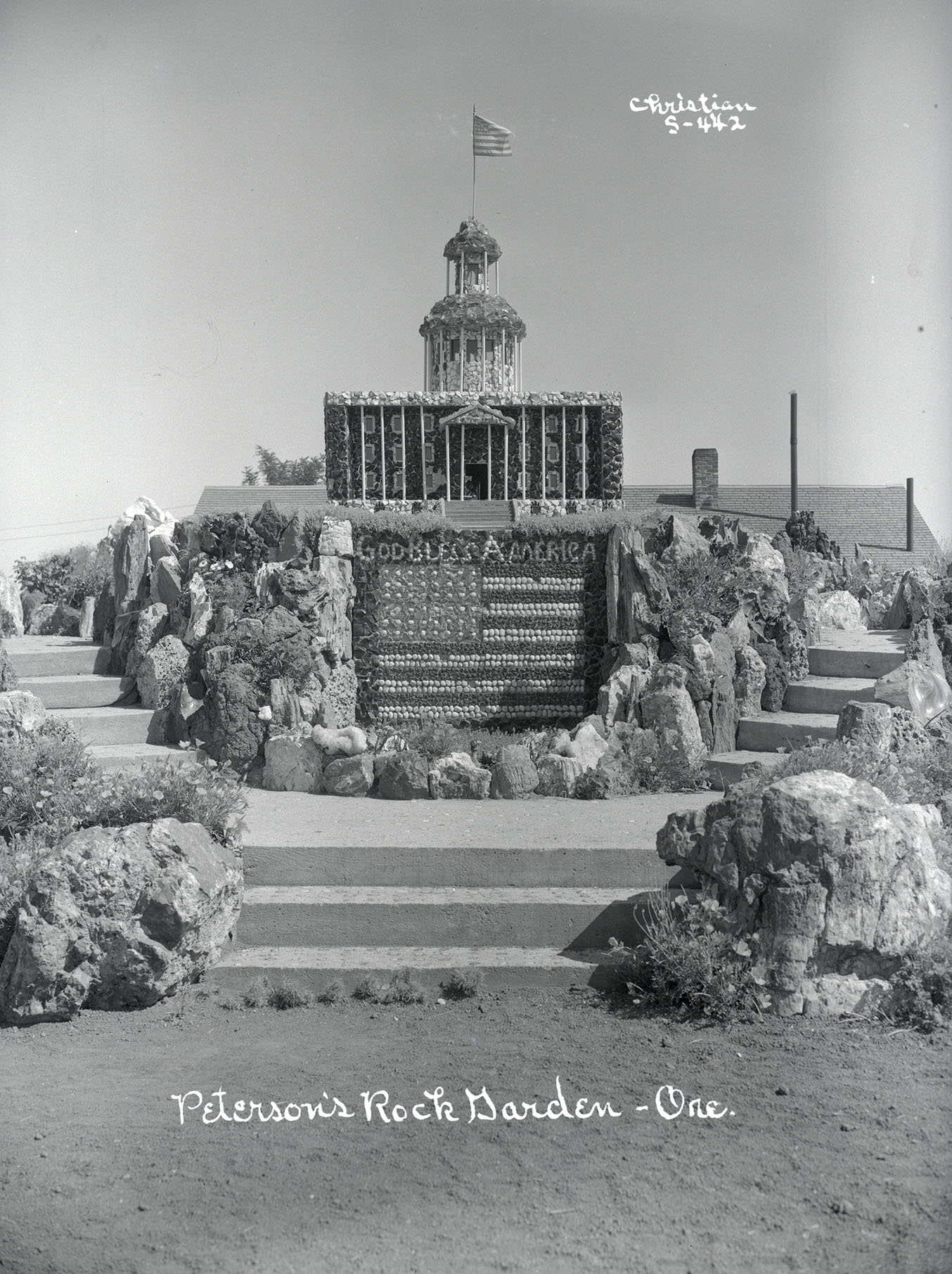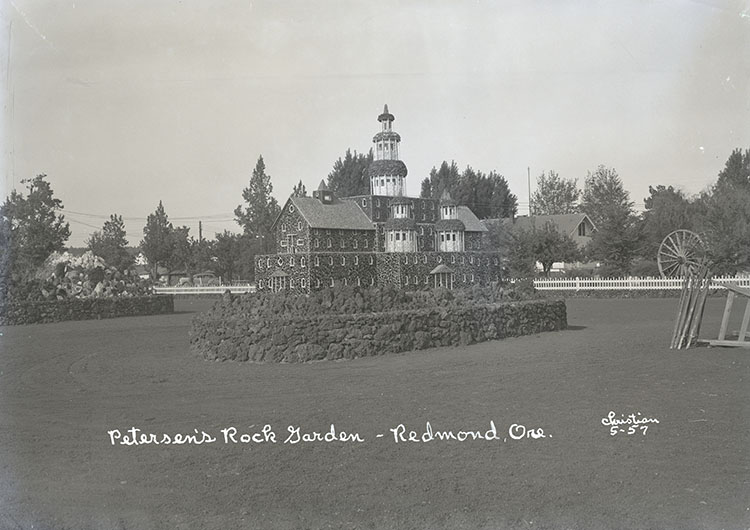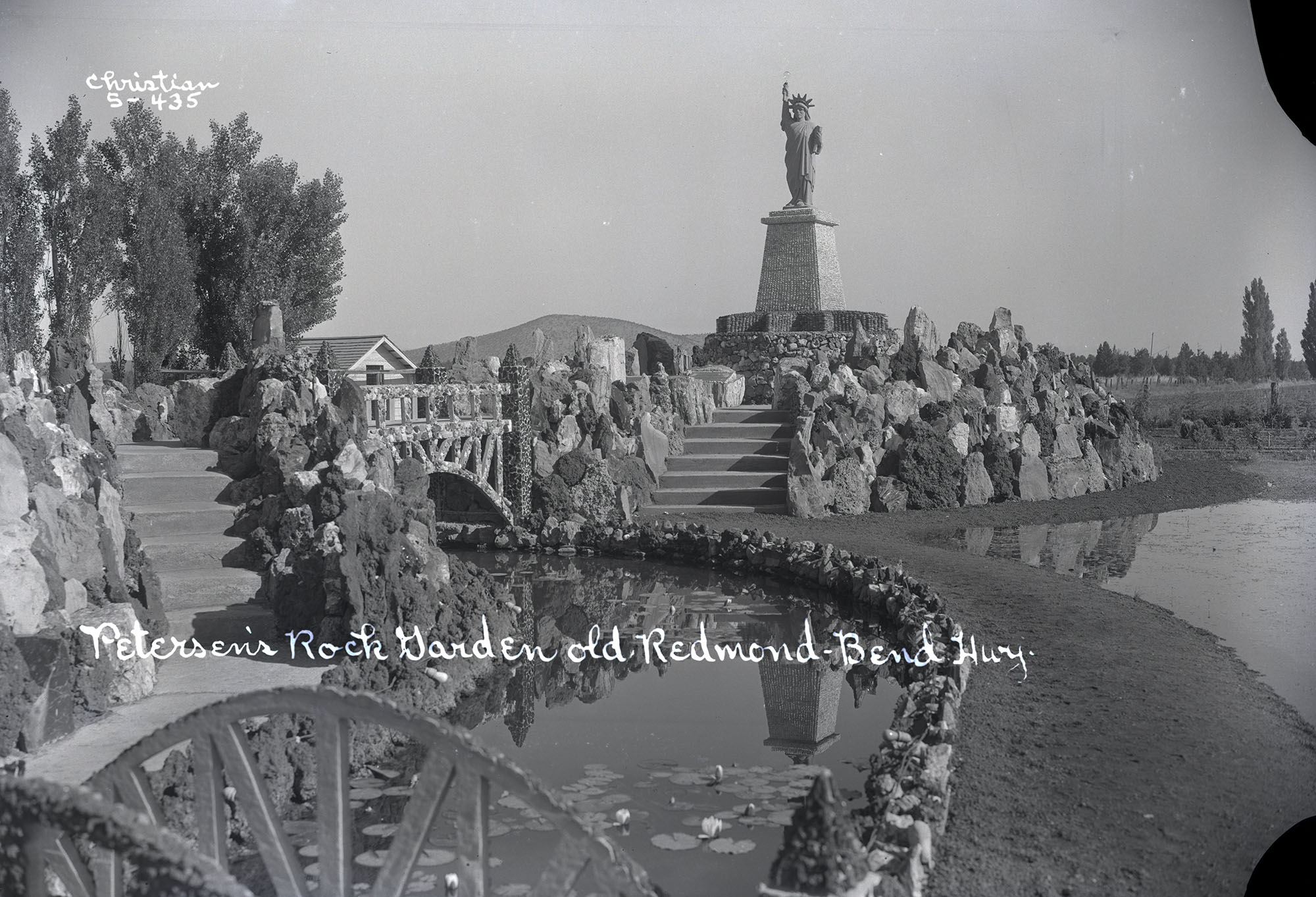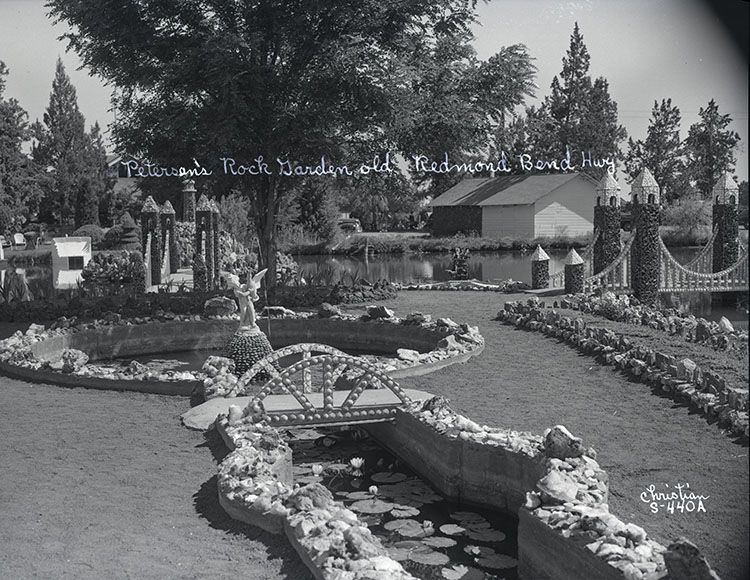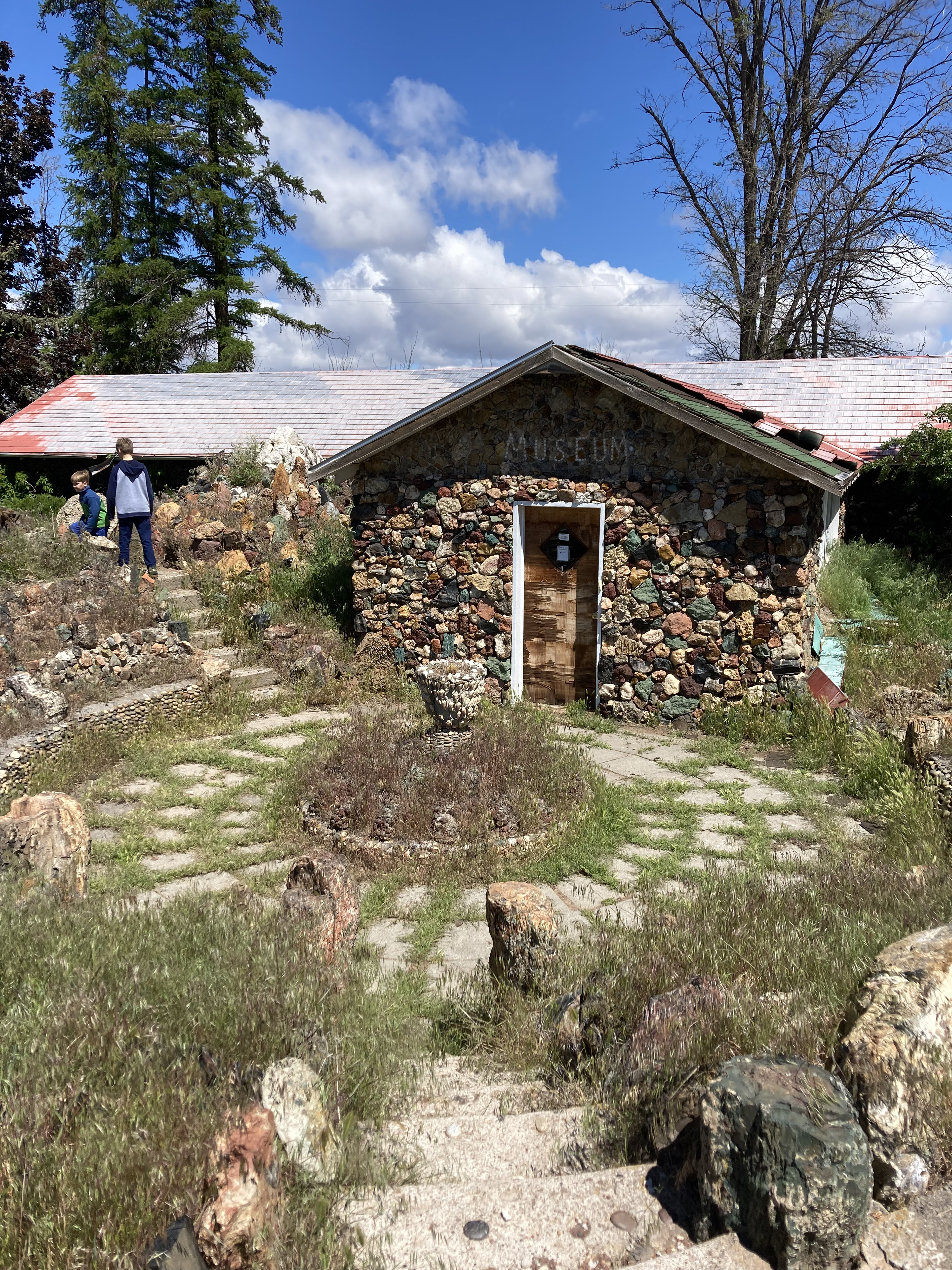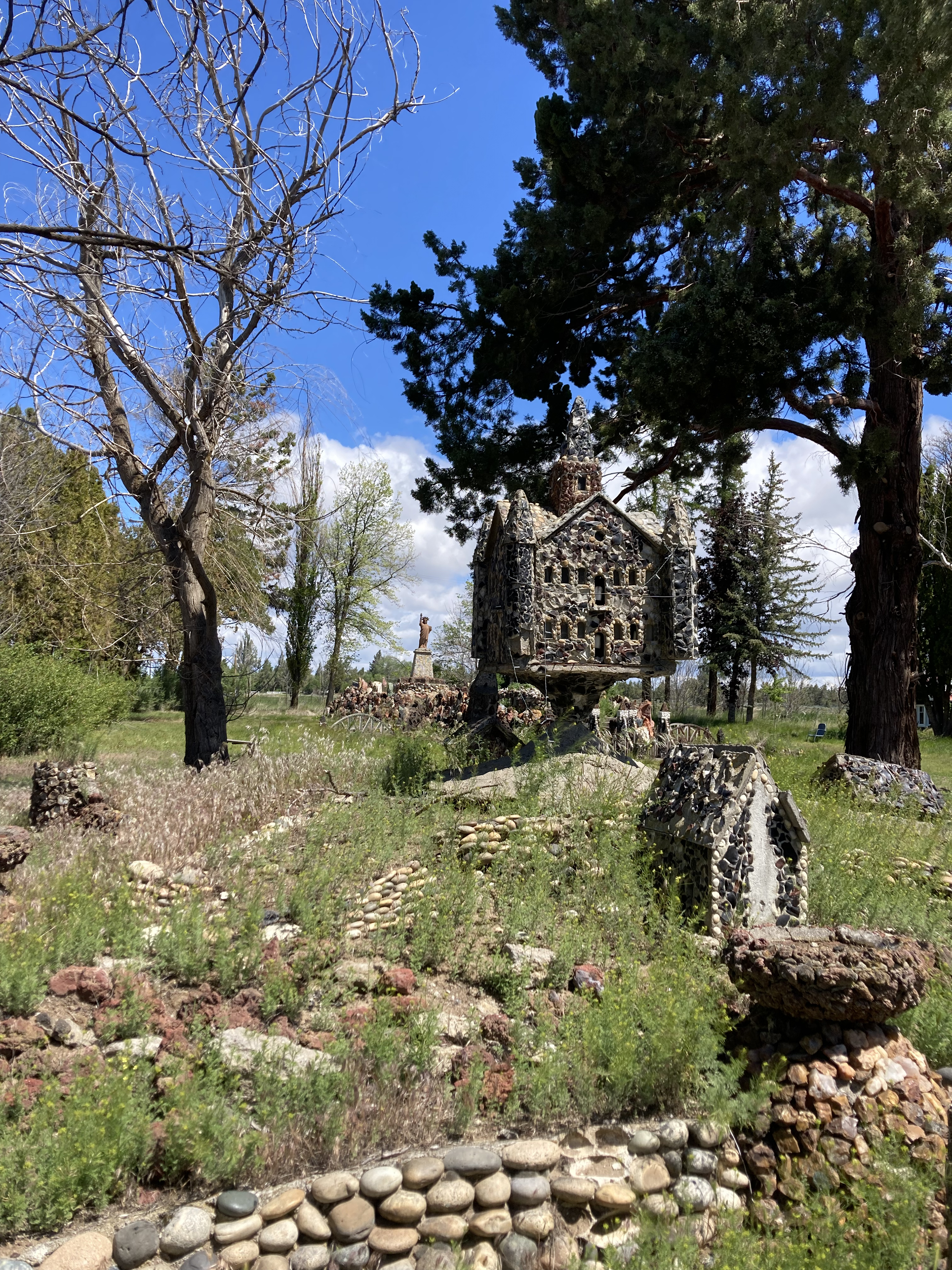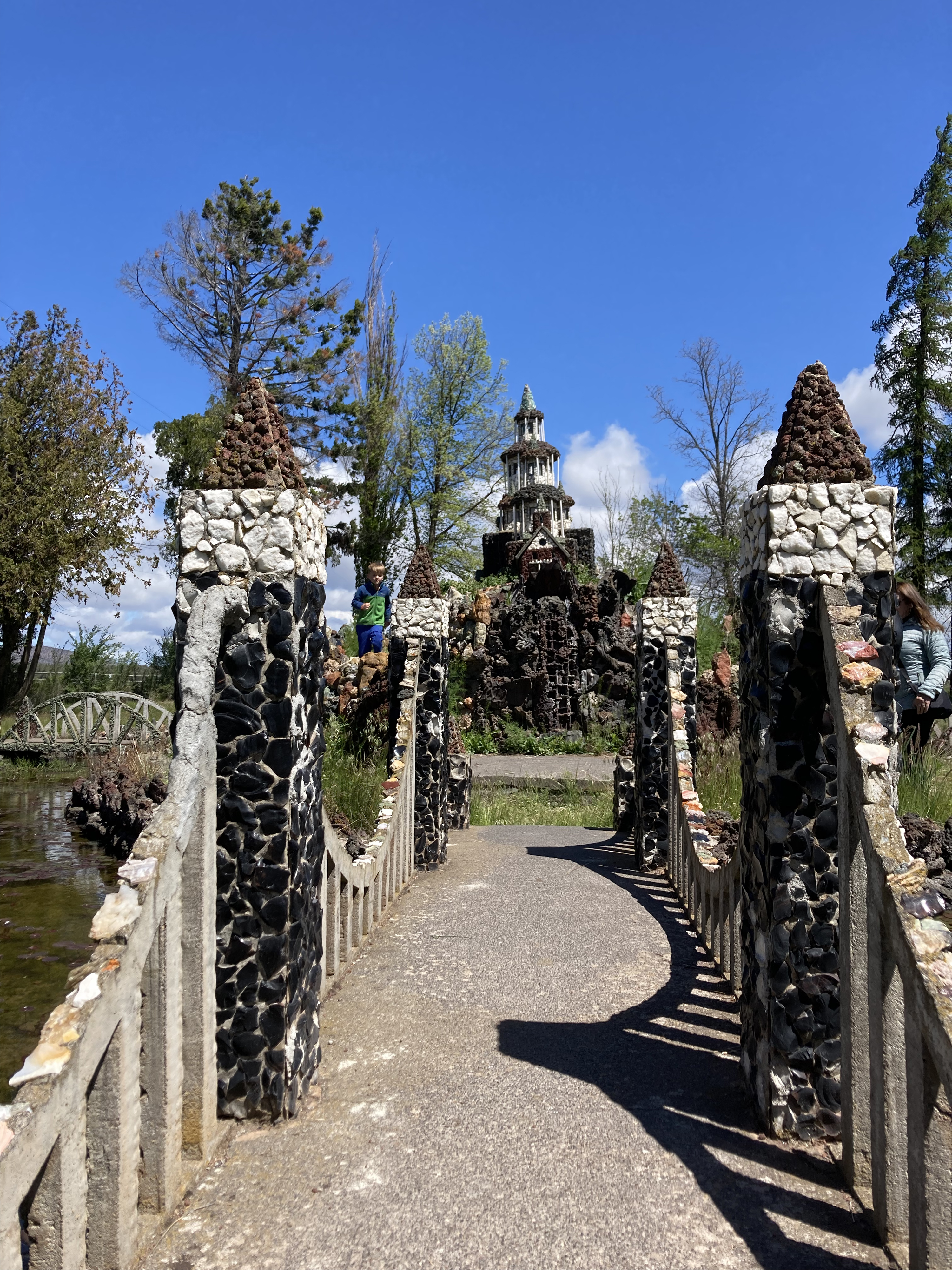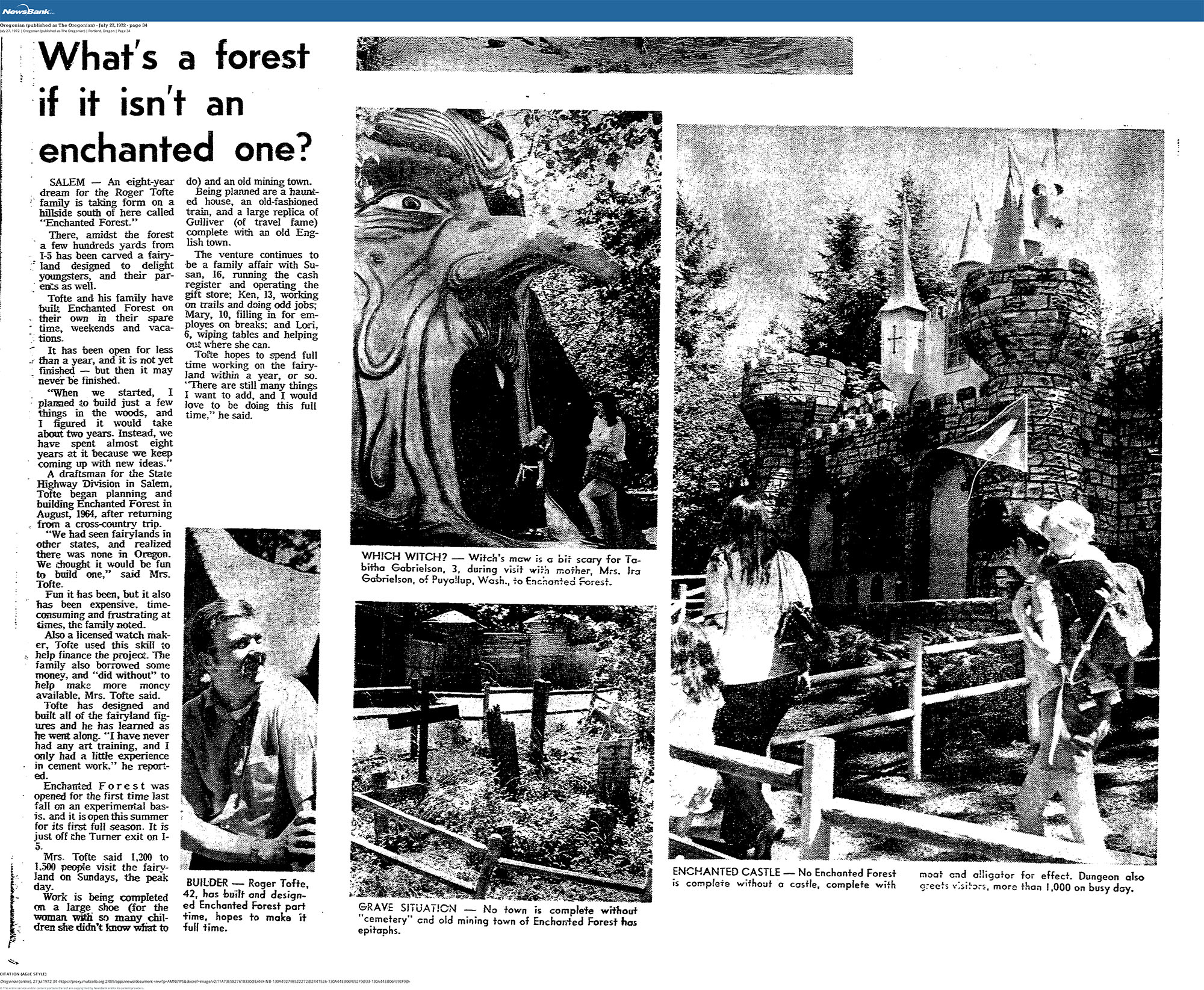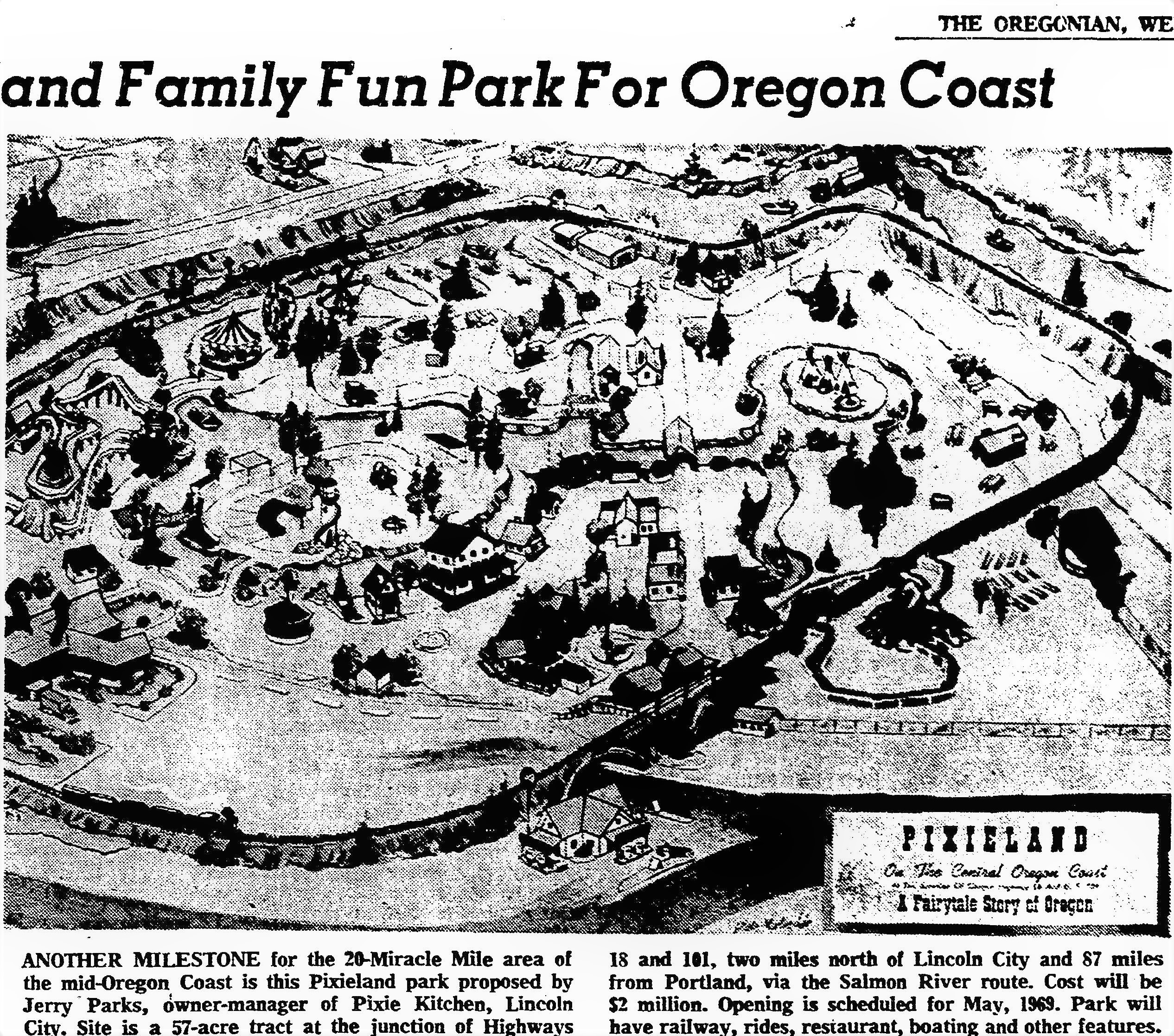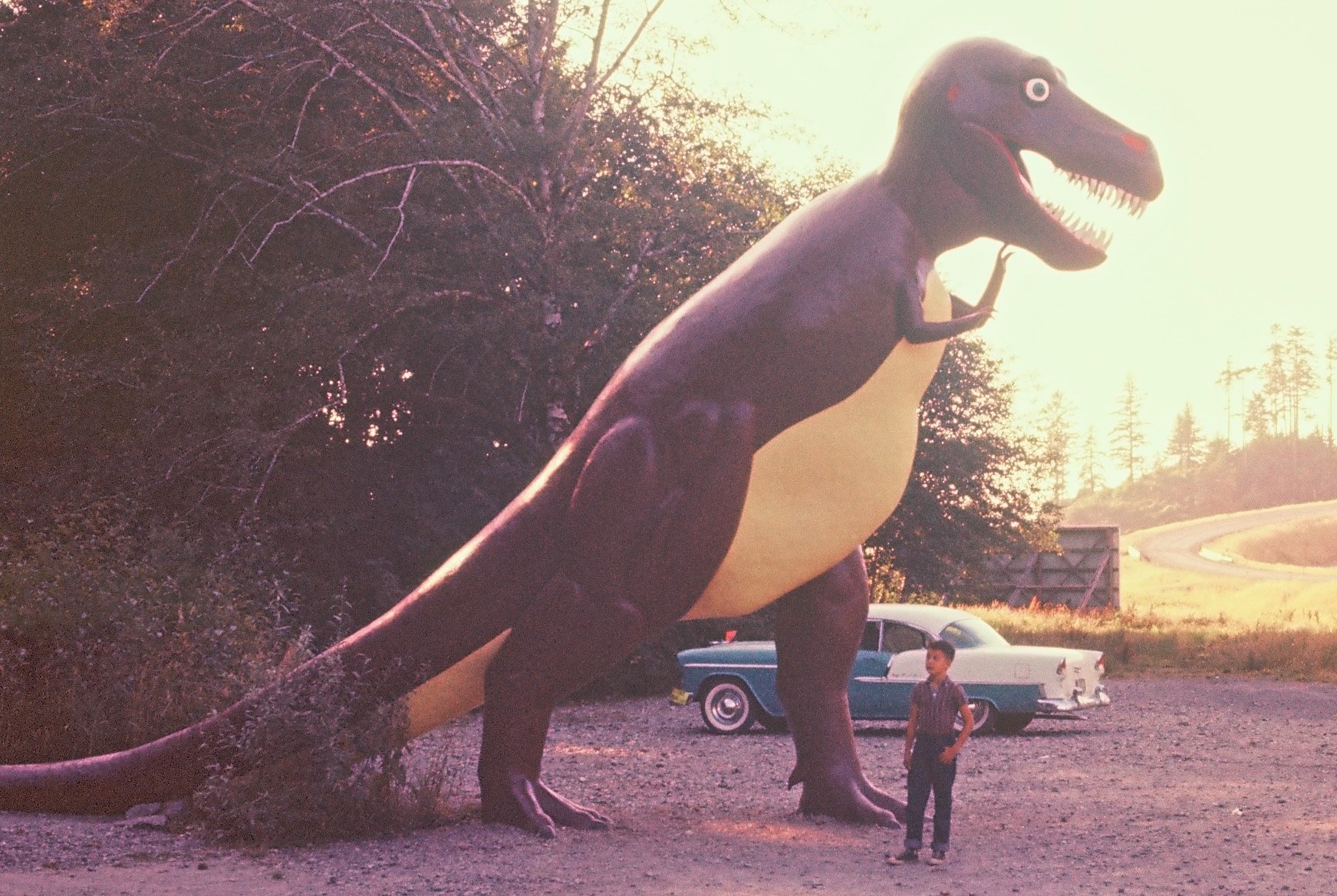Petersen Rock Garden is a unique folk art environment in central Oregon that has drawn visitors from around the world since 1938. It was the creation of Rasmus Christian Petersen, who built the attraction single-handedly beginning in 1935 until his death in 1952. The four-acre site, which is open to the public, consists of eclectic novelty architecture that celebrates Petersen’s adopted home in America. It is constructed of volcanic rock and river rock set into concrete, as well as other rocks, fossils, shells, petrified wood, and semi-precious stones, most of which Petersen collected in central and eastern Oregon.
Born on January 10, 1883, Petersen was eighteen years old in 1901 when he and his twenty-year-old brother, Lars, immigrated from Denmark to the United States. They settled in the Danish community of Nysted, Nebraska, where they attended a traditional Danish folk school, one of five in the country, and obtained a liberal arts education. Rasmus Petersen studied agriculture at the local technical high school, and in 1905 he and his brother moved to Junction City, a Willamette Valley town that had a sizable Danish population.
A year later, Rasmus took advantage of the Desert Land Act, which required claimants to irrigate and cultivate the land, to claim an eighty-acre homestead about eight miles southwest of Redmond and twelve miles north of Bend. By the mid-1920s, he was a successful farmer with 256 acres of mostly irrigated land, where he grew hay and grain and raised livestock. He weathered the Great Depression during the 1930s by growing potatoes.
In 1935, at the age of fifty-two, Petersen began building his rock garden, working by himself, mostly during the winter when the farm work slowed down. He had been clearing rocks from his land for many years and had acquired a considerable stockpile. Used to working fourteen-hour days, he did not like to be idle and began constructing miniature buildings, bridges, fountains, and monuments. “He just started doing it,” said his granddaughter Susan Caward, who now owns the rock garden. “He loved what he did; it was his way of unwinding.”
Petersen started the rock garden near his house, creating simple forms using semiprecious rocks such as agate, jasper, obsidian, thunder eggs, and lava that he collected in the area. He eventually planted more than sixty varieties of flowers and mosses. Over time, the rock garden became more extensive and elaborate with the addition of miniature buildings—a castle, a church, a cabin, and a schoolhouse—along with bridges and water features. Word spread about the unusual garden, and people began to visit—more than seven thousand in 1938.
By 1940, Petersen had retired from farming and had begun to sell his farmland so he could devote all of his time to the rock garden. At the base of one sizable building that resembled the White House, he placed a large American flag. He built a museum of wood clad with lava rock and other colored stones to display his growing collection of rocks and minerals and added a large pond with islands, bridges, and a lighthouse. The most notable addition during the 1940s was a miniature replica of the Statue of Liberty. On the base were words from a popular song written in 1949: “Enjoy yourself. It is later than you think.” By the early 1950s, the rock garden covered four acres.
In 1950, Petersen married Nyleta Harris, a widow who had two children. By then, the Petersen Rock Garden had become a tourist attraction that drew 120,000 visitors annually. Petersen did not charge admission, but he encouraged donations and sold merchandise in the museum. After he died in 1952, Nyleta operated the attraction until her death in 1987, when her daughter Adele Hegardt and her husband Harry took over its management. The garden is still owned by the family, overseen by Adele Hegardt’s daughter Susan Caward.
The Petersen Rock Garden was placed on the National Register of Historic Places in 2013. It was closed to the public in 2016 but has since reopened to visitors. A reporter for the Oregonian, visiting in 2017, observed that the attraction was “barely hanging on” and was in “a state of disrepair,” primarily because the family has not had the resources to invest in its upkeep.
The Petersen Rock Garden is open to visitors every day with a six-dollar suggested donation. Despite its decline, the attraction continues to be admired for the painstaking work, years of dedication, and artistry of Rasmus Petersen.
-
![]()
Petersen Rock Garden.
Courtesy National Park Service
-
![]()
Petersen Rock Garden.
Courtesy National Park Service
-
![]()
Petersen Rock Garden.
Courtesy National Park Service
-
![]()
Petersen Rock Garden.
Courtesy National Park Service
-
![]()
Petersen Rock Garden.
Oregon Historical Society Research Library, Org. Lot 1275
-
![]()
Petersen Rock Garden.
Oregon Historical Society Research Library, Org. Lot 1275
-
![]()
Petersen Rock Garden.
Oregon Historical Society Research Library, Org. Lot 1275
-
![]()
Petersen Rock Garden.
Oregon Historical Society Research Library, Org. Lot 1275
-
![]()
Petersen Rock Garden.
Oregon Historical Society Research Library, Org. Lot 1275
-
![]()
Petersen Rock Garden.
Oregon Historical Society Research Library, Org. Lot 1275
-
![]()
Petersen Rock Garden.
Oregon Historical Society Research Library, Org. Lot 1275
-
![]()
Petersen Rock Garden.
Courtesy Erin Brasell
-
![]()
Petersen Rock Garden.
Courtesy Erin Brasell
-
![]()
Petersen Rock Garden.
Courtesy Erin Brasell
-
![]()
Petersen Rock Garden.
Courtesy Erin Brasell
-
![]()
Petersen Rock Garden.
Courtesy Erin Brasell
-
![]()
Petersen Rock Garden.
Courtesy Erin Brasell
-
![]()
Petersen Rock Garden.
Courtesy Erin Brasell
-
![]()
Petersen Rock Garden.
Courtesy Erin Brasell
-
![]()
Petersen Rock Garden.
Courtesy Erin Brasell
-
![]()
Petersen Rock Garden.
Courtesy Erin Brasell
-
![]()
Petersen Rock Garden.
Courtesy Erin Brasell
-
![]()
Petersen Rock Garden.
Courtesy Erin Brasell
-
![]()
Petersen Rock Garden.
Courtesy Erin Brasell
Related Entries
-
![Enchanted Forest]()
Enchanted Forest
The Enchanted Forest theme park in Turner, Oregon, just south of Salem …
-
![Pixieland]()
Pixieland
Pixieland was a short-lived but popular amusement park on the Oregon Co…
-
Prehistoric Gardens
Prehistoric Gardens, with its twenty-foot-tall concrete Tyrannosaurus g…
Map This on the Oregon History WayFinder
The Oregon History Wayfinder is an interactive map that identifies significant places, people, and events in Oregon history.
Further Reading
State Historic Preservation Office Staff. (2013). National Register of Historic Places Registration Form.
Hale, J. "Petersen Rock Garden is Still Surviving, But in a State of Disrepair." Portland Oregonian/Oregon Live., May 17, 2019. Retrieved August 19, 2020, from https://www.oregonlive.com/travel/2017/10/petersen_rock_garden_is_still.html

